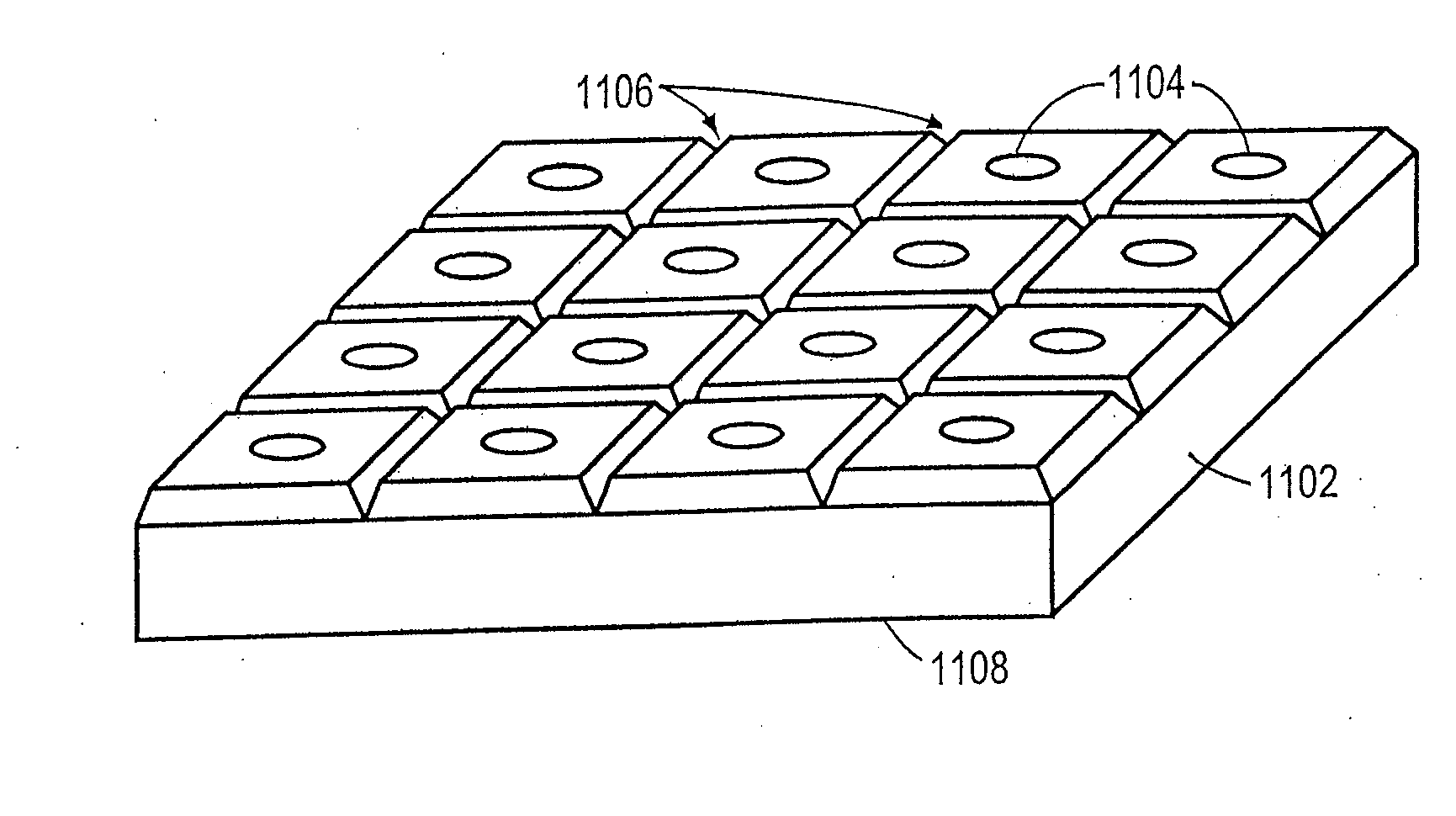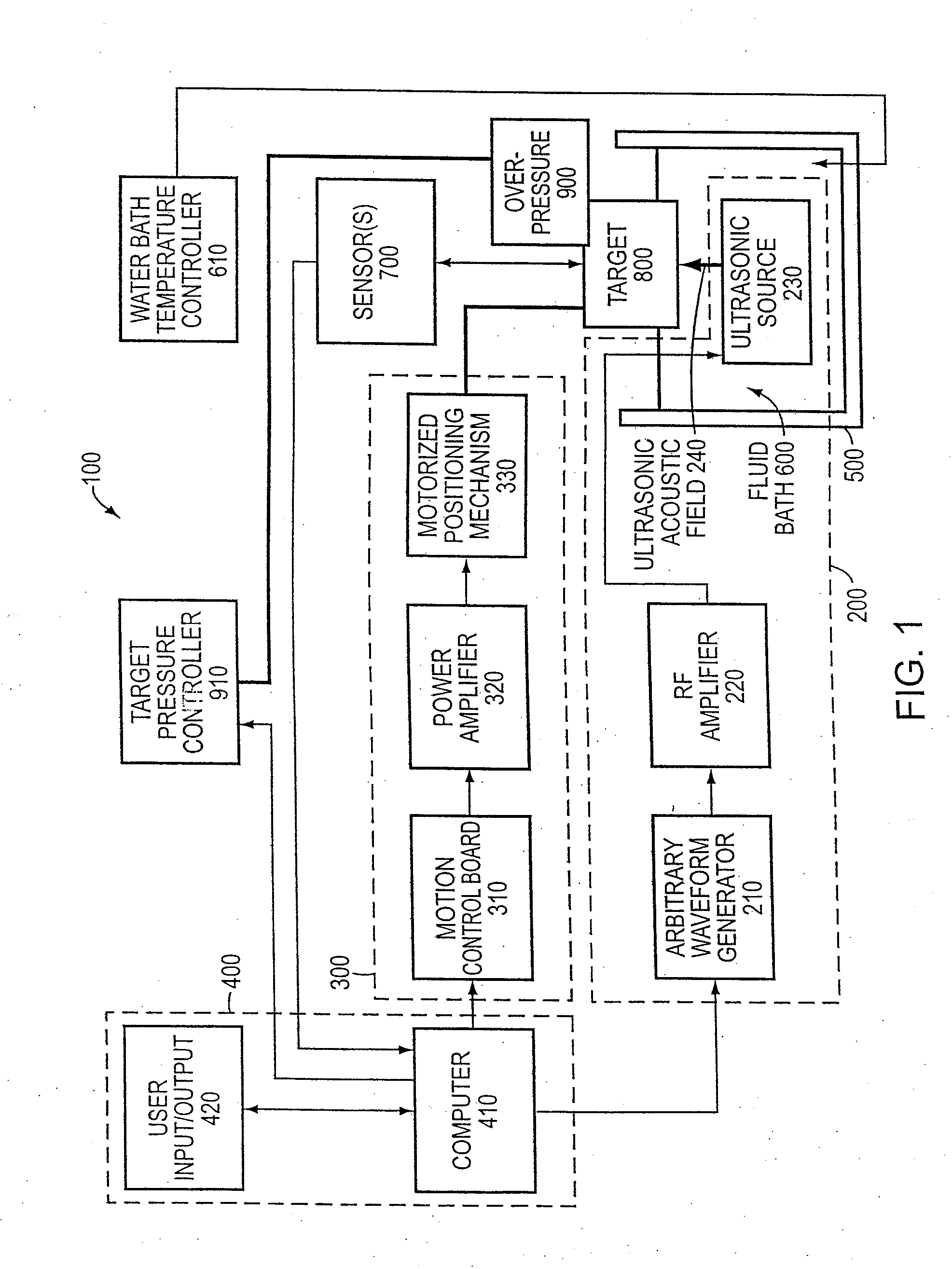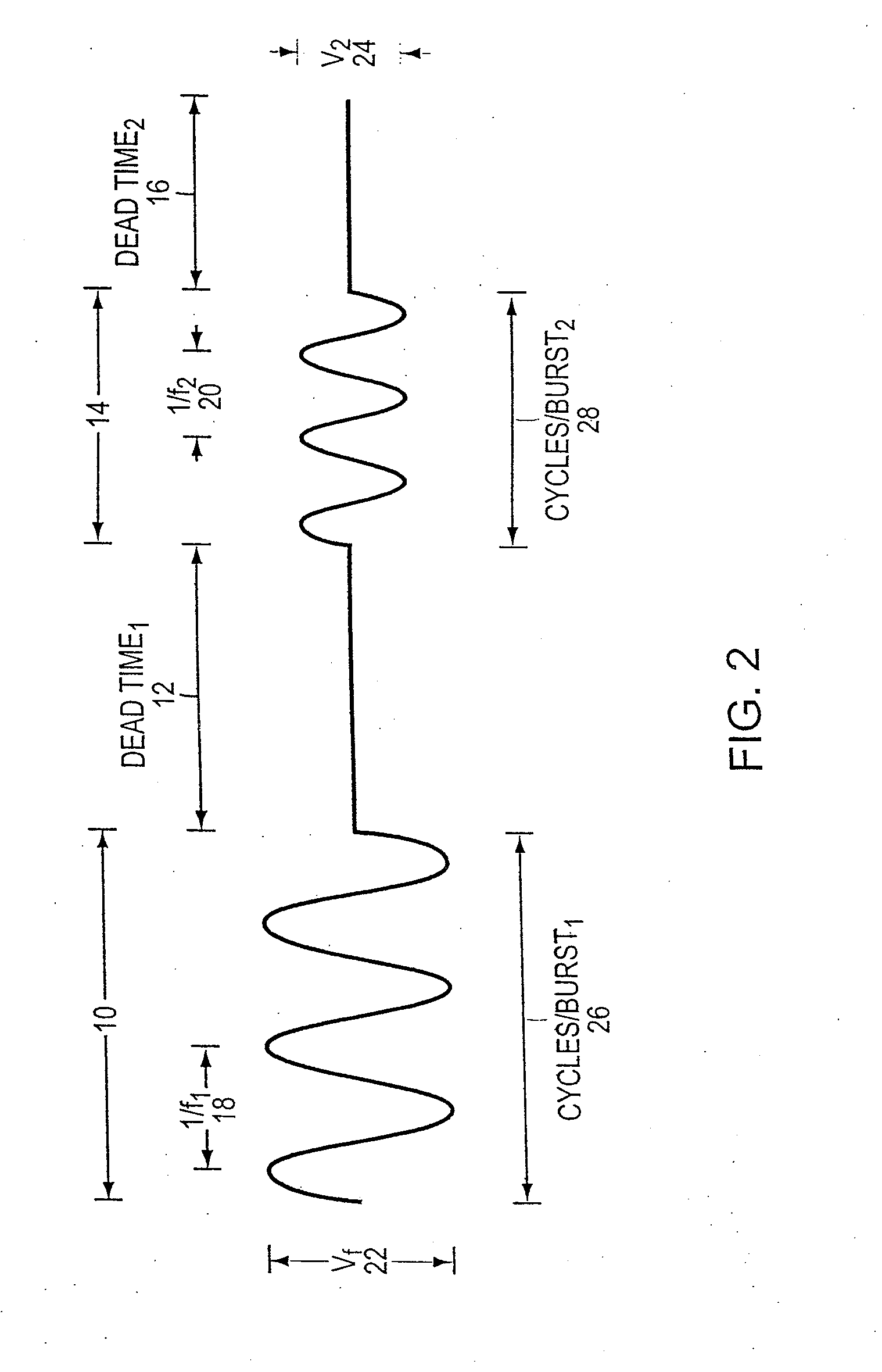Method and apparatus for acoustically controlling liquid solutions in microfluidic devices
a microfluidic device and liquid solution technology, applied in the direction of fluid speed measurement, emulsification, chemical/physical/physicochemical processes, etc., can solve the problems of difficult to actively mix or control the fluid flow in small quantities, microfluidic devices, and the detrimental effect of diffusion-based systems on commercial products, etc., to accelerate molecular interactions and improve reaction rates
- Summary
- Abstract
- Description
- Claims
- Application Information
AI Technical Summary
Benefits of technology
Problems solved by technology
Method used
Image
Examples
example one
Cavitation Promoting Sites
[0261]A glass slide was scratched with a diamond scribe. The slide was placed in a slide holder and installed scratch-down in the apparatus of FIG. 1, modified by the addition of a 5 MHz cavitation detection transducer placed confocally with the main 1.1 MHz acoustic power transducer 230. This instrument was used for all the following examples except where noted. A process was configured to sweep the slide through the focal point of the convergent acoustic beam of the power transducer. The glass slide was insonified with a treatment waveform generated by a 100 mV, 1% duty cycle, 1000 cycles per burst signal applied to a 55 dB RF amplifier and input to the power transducer. Both the input signal to the RF amplifier and the output signal from the cavitation detection transducer were applied to channels 1 and 2 of a Tektronix TDS 30334 digitizing oscilloscope. The signal from the cavitation detection transducer was processed in real time to create a FFT freque...
example two
Mixing with Particles in a Acoustic Field
[0264]We conducted a number of experiments with dyes and water in a chamber on a microscope slide. The chamber was 12 mm in diameter and 0.5 mm high. We applied dye and water in the chamber and placed it in a sample holder, such as those described above with respect to FIGS. 1-7. We adjusted the water level in the tank such that the top of the slide was not covered by water. This creates a standing-wave sound field when insonified from below. We insonified the chamber with a wide range of treatments. These treatment caused noticeable but not dramatic mixing. We then added glass microspheres of the type used to thicken epoxy to the chamber. In the standing-wave acoustic field, the microspheres translated and aggregated at the acoustic nodes. By dithering the chamber in two dimensions in the acoustic field, the particles were forced to translate within the chamber and thus, mix the fluid in the chamber. We noticed a significant increase in mixi...
example three
“Selectively Blocking an Acoustic Field
[0265]If a microdevice or region to be treated is smaller than the focal region of a convergent acoustic beam, or if it is necessary to protect portions of the microdevice from the sound field, acoustic blocking materials may be placed to shadow selected areas from the acoustic source. To illustrate this and its application to MEMS devices, an acoustic blocking material (Tyvek) was applied to the outside of a chamber containing a piece of foil. The result was that cavitation damage preferentially occurs on the unblocked portion of the foil.
PUM
| Property | Measurement | Unit |
|---|---|---|
| width | aaaaa | aaaaa |
| frequency | aaaaa | aaaaa |
| frequency | aaaaa | aaaaa |
Abstract
Description
Claims
Application Information
 Login to View More
Login to View More - R&D
- Intellectual Property
- Life Sciences
- Materials
- Tech Scout
- Unparalleled Data Quality
- Higher Quality Content
- 60% Fewer Hallucinations
Browse by: Latest US Patents, China's latest patents, Technical Efficacy Thesaurus, Application Domain, Technology Topic, Popular Technical Reports.
© 2025 PatSnap. All rights reserved.Legal|Privacy policy|Modern Slavery Act Transparency Statement|Sitemap|About US| Contact US: help@patsnap.com



